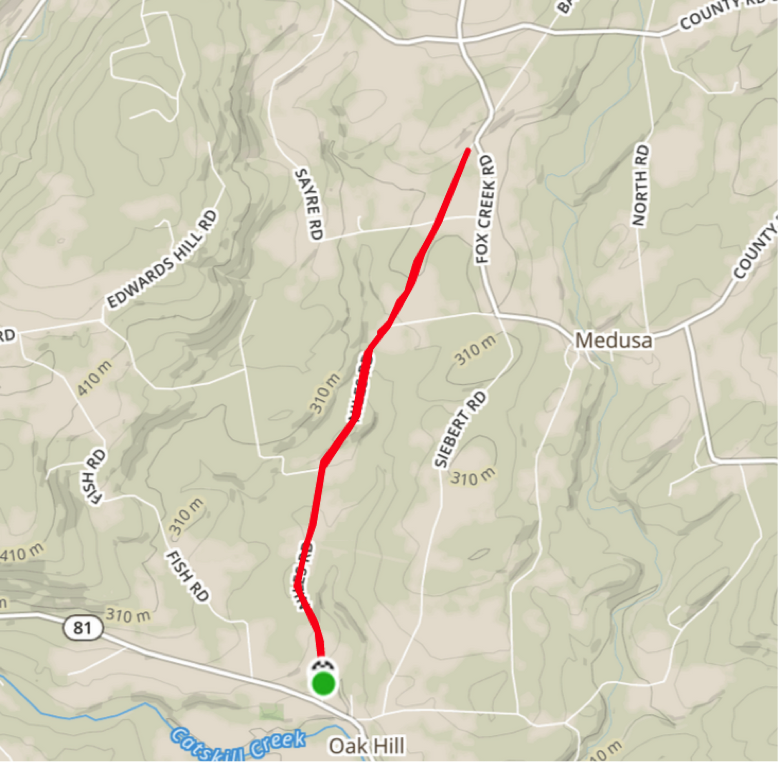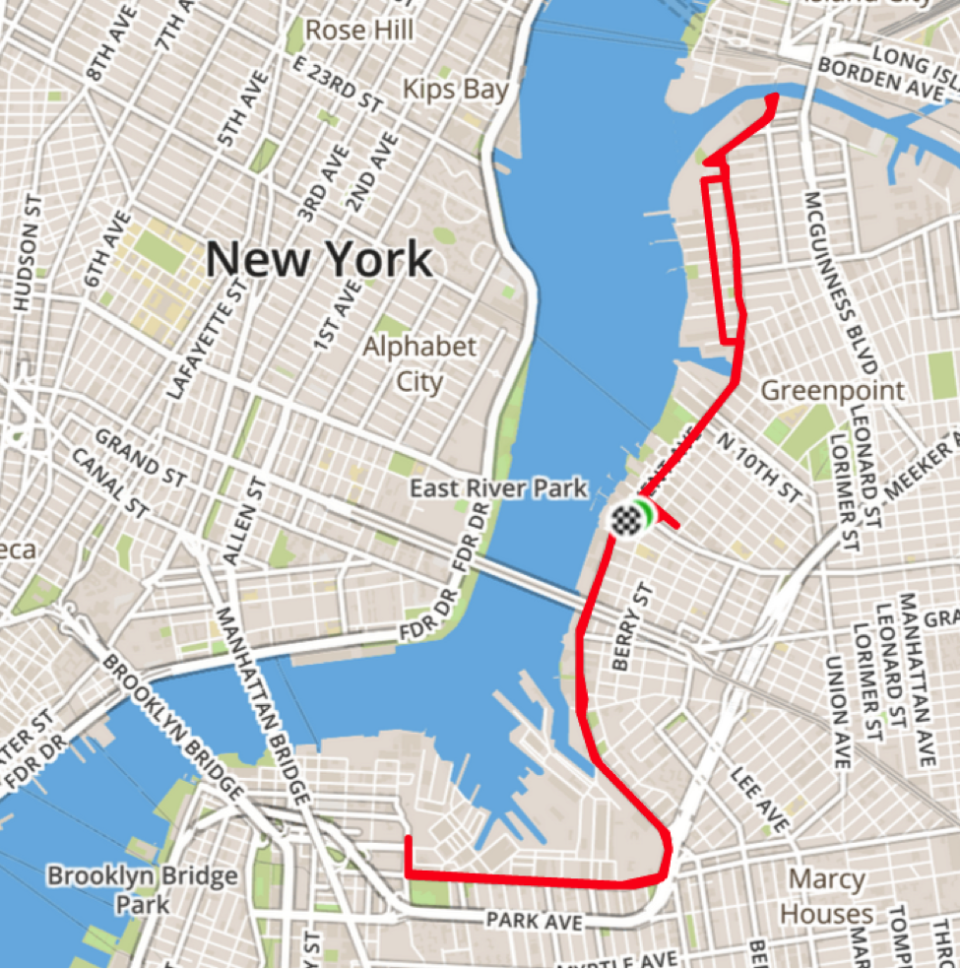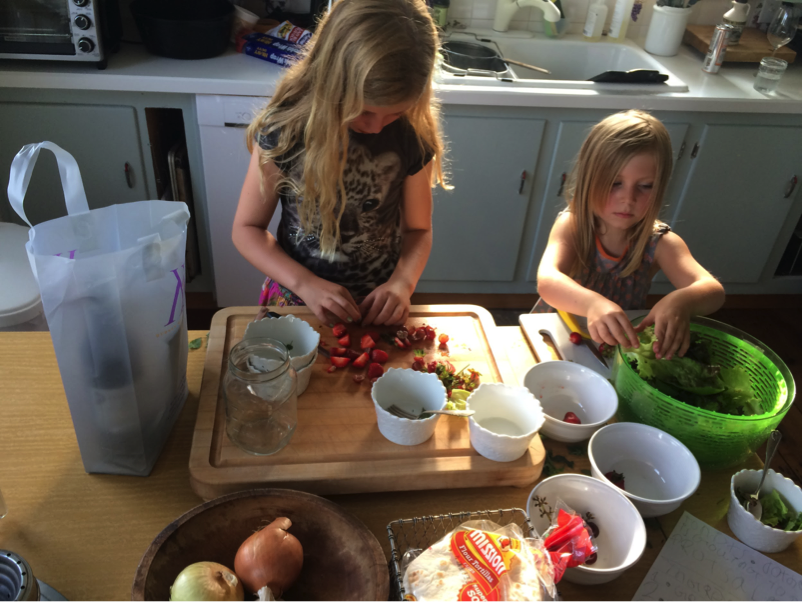How a Chef Trains for a Marathon
Over the next few weeks, we’ll be checking in with several staff members of the Brooklyn restaurant Egg as they train for the NYC Marathon. Training is tough, especially when you’re regularly surrounded by delicious temptations. Today, owner and chef George Weld brings us along on a week’s worth of race prep as he figures out which foods give him the energy he needs to get to the finish line.

All photos by George Weld
By George Weld, chef and owner of Egg
This is my fourth year training for the New York City marathon. My first year was 2012, when Hurricane Sandy caused the marathon to be cancelled two days before the start. I ran the 2013 and 2014 marathons, then trained for another marathon this past winter only to have it cancelled at the start line. So I’ve run two marathons, but trained for four, and in the process learned that it’s the training that I really love.
I love the routine, the constant adjustments you learn to make to your diet, and your schedule as you adapt to the changes that training requires.
Related: Fatty Foods That Actually Improve Your Health
You’d think that as someone who works with food professionally — I’m the founding chef and owner of Egg restaurant in Brooklyn — I would have focused on the relationship between what I ate during training and how I was performing. But no.
Until this year, the relationship I cared about was this one: the more I run, the more I get to eat. For the past few months, though, I’ve been trying to think it through more carefully. And I’ve noticed that a very basic tenet of healthy eating — that I feel a lot better when I get most of my calories from vegetables and fruits — seems, in fact, to be true. Groundbreaking, I know.
This year, as always, I’m running for Wellness in the Schools, a charity that works within the public school system in New York City to improve lunch programs and promote childhood fitness. They’ve developed an alternative menu for public schools, one that emphasizes from-scratch cooking and fresh ingredients, and they partner with schools to help implement that menu and get kids excited about eating well.
Related: Why You Should Be More Eating More Spicy Foods

Statue of Fred Lebow, founder of the NYC marathon, in New York City’s Central Park.
Friday, Oct. 9
Today is the longest run this training cycle, 20 slow miles. This is as close as I’ll get to a full dry run of the marathon, and I chose to use it to practice most of the back half of the course, which is where the marathon really gets hard.
Eating for a run like this is no fun: I can’t eat real food like nuts and pretzels without upsetting my stomach, so I subsist on marathoner’s fuel: energy gels, which are sticky packets of energy-dense goop made up of sugars and caffeine. They do nothing except keep you from falling apart as you run.
They work this time, and I seem to be holding up O.K. I finish this run with two fast miles at the actual pace I’m targeting for the marathon, which is seven minutes and 40 seconds per mile. I clean up and head over to Egg, where I have my usual training-season breakfast: granola with soy milk and as much fruit as I can filch from the kitchen without causing a ruckus.
Related: How to Eat a Healthy Meal Just About Anywhere

“Next time I see this stretch of road in Central Park, there’ll be a big finish line across it,” writes Weld.
Saturday, Oct. 10
I feel better than I expected I would today after yesterday’s long run, and the weather is helping — it’s a perfect fall day and we’re in the Catskills where the trees, in their autumn colors, look illuminated from within.
Today’s a shakeout run on the hilly road by our house. I take a warm-up mile with my daughter, 6, who runs in fits and starts but provides good company. Then I do five miles alone, soaking up the smells of fall, which always make me think of curry spices, which make me very hungry.
Fortunately we have enough stuff left in our garden to make a good dinner: red Russian kale, roasted delicata squash, sweet grape tomatoes, and brown rice.
Related: 13 Reasons You Should Be Using Coconut Oil

Saturday’s run in Oak Hill, New York.
Sunday, Oct. 11
Ran early today in anticipation of a pig roast at a neighbor’s farm, Heather Ridge in Schoharie County. She’s roasted an Ossabaw pig and is serving it with a fall vegetable salad, potato salad, apple cake, slaws, and cider.
The run is lovely, but lunch is the highlight of this day. I’ve been cutting back on meat during training, trying to get more of my calories from vegetables and fruit, so this rare indulgence of fatty heritage breed pork tastes especially delicious.
My family and I are camping out in the backyard tonight. The kids’ dinner is mostly s’mores; I make a stew out of the garden for myself — kale, tomatoes, brown rice — and eat a ton of it.
Related: 12 Foods Nutritionists Say They Won’t Ever Eat

“Zettie, my 6-year-old, running ahead of me in the Catskills.”
Monday, Oct. 12
Rest days are the hardest days in a training cycle. I’m grateful for the break, but I get antsy and tense, too — you get used to having that time every day to sweat and think and clear your head. Frankly, it’s also a challenge not to eat everything in sight.
I had nuts for breakfast, a tofu scramble for lunch, and lot of falafel and babaganoush for dinner. None of it was particularly fulfilling, mostly because none of it was homemade. Looking forward to tomorrow: Tuesdays are the days I do my hardest runs.
Tuesday, Oct. 13
Today, I had coffee before running, then granola and soy milk, fruit and nuts. Lunch was salad, but dinner I gorged on disgusting sushi. What can I say.
I’m in the dreaded taper section of training now, when you stop piling on heavier workloads each week and instead start scaling back so that your legs are fresh for race day. For me, training now becomes more and more of a mental game, thinking through what might go wrong and how to recover from it and trying to channel my nervous energy into productive uses. It’s also the time of training when I start to think more about my motivation.
Related: 7 Healthy Meals You Can Make in 15 Minutes

Tuesday’s run.
I have personal motivations and goals for this race — to beat last year’s time, to finish strong, and avoid a post-race visit to the medical tent. But what makes me feel justified in doing this all, what makes me want to succeed more than my personal goals, is my affiliation with the charity I run for, Wellness in the Schools (WITS).
They do incredible work — I’ve seen their successes with my own kids when WITS worked with their public school, P.S. 84 in Williamsburg. I spent years trying to get my kids interested in cooking — my older daughter used to spend hours with me in the kitchen at Egg, watching me do everything from make biscuits to butcher sides of pork. But nothing got them excited about making food like WITS’s chef Carly did; she showed my younger daughter how to use a knife and taught my older daughter how to make potato salad. My kids are regular presences in the home kitchen now, eager to learn how to cook everything.
Training for a marathon is also a pretty tidy metaphor for the scale of the work WITS does. It requires patience and persistence, and it demands that every day you wake up, swing your legs out of bed and into your shoes, and lace up to give it everything you’ve got.
Related: A Week’s Worth of Healthy Lunches Your Kids Will Eat

“My kids, Margaret and Zettie, inventing foods in the kitchen.”
Wednesday, Oct. 14
Coffee before running, nuts and fruit after, then granola and soy milk. Salad for lunch, plus fruit and nuts throughout the day. Dinner was homemade pasta with tomato sauce and pan-seared broccoli with white wine and chiles.
The run was a nice cruise today — through our neighborhood, over a little bridge that the marathon route crosses, and back. The creek that the bridge crosses is a Superfund site, which means it’s one of the most polluted places in America. But it looks awfully pretty in the mornings, lined with sailboats and backed by buildings glittering in the sunrise.
Thursday, Oct. 15
Coffee before running, almond butter and bread nuts and plums after. Lunch is a sandwich of sautéed kale and broiled tomatoes.
The taper-period jitters are real: I woke up this morning obsessed with the idea that I hadn’t done enough hill running this training cycle to prepare myself for the bridges and hills in the marathon. So instead of going out for a gentle four-miler like I was supposed to do, I ran at marathon pace back and forth over the Williamsburg Bridge, just to show myself I could do it.
Of course, it’s an entirely different experience to go over a bridge first thing in the morning when your legs are fresh than to do it after 15 miles of hard running. But there’s not really any way to prepare for that, exactly. And I think the primary preparation — especially at this point — is psychological. When I go over the Queensboro Bridge on November 1st, I’ll think back to how I surged up the bridge this morning and let myself practically tumble down the other side of it. This morning’s run will give me a reference point.
I’m flying to Mississippi later today to attend the Southern Foodways Alliance symposium in Oxford, and I’ve got a lot of running to do while I’m there. It’s just as well — I anticipate eating almost non-stop throughout the conference.
Related: Apples Are American Kids’ Favorite Fruit, According to Report

